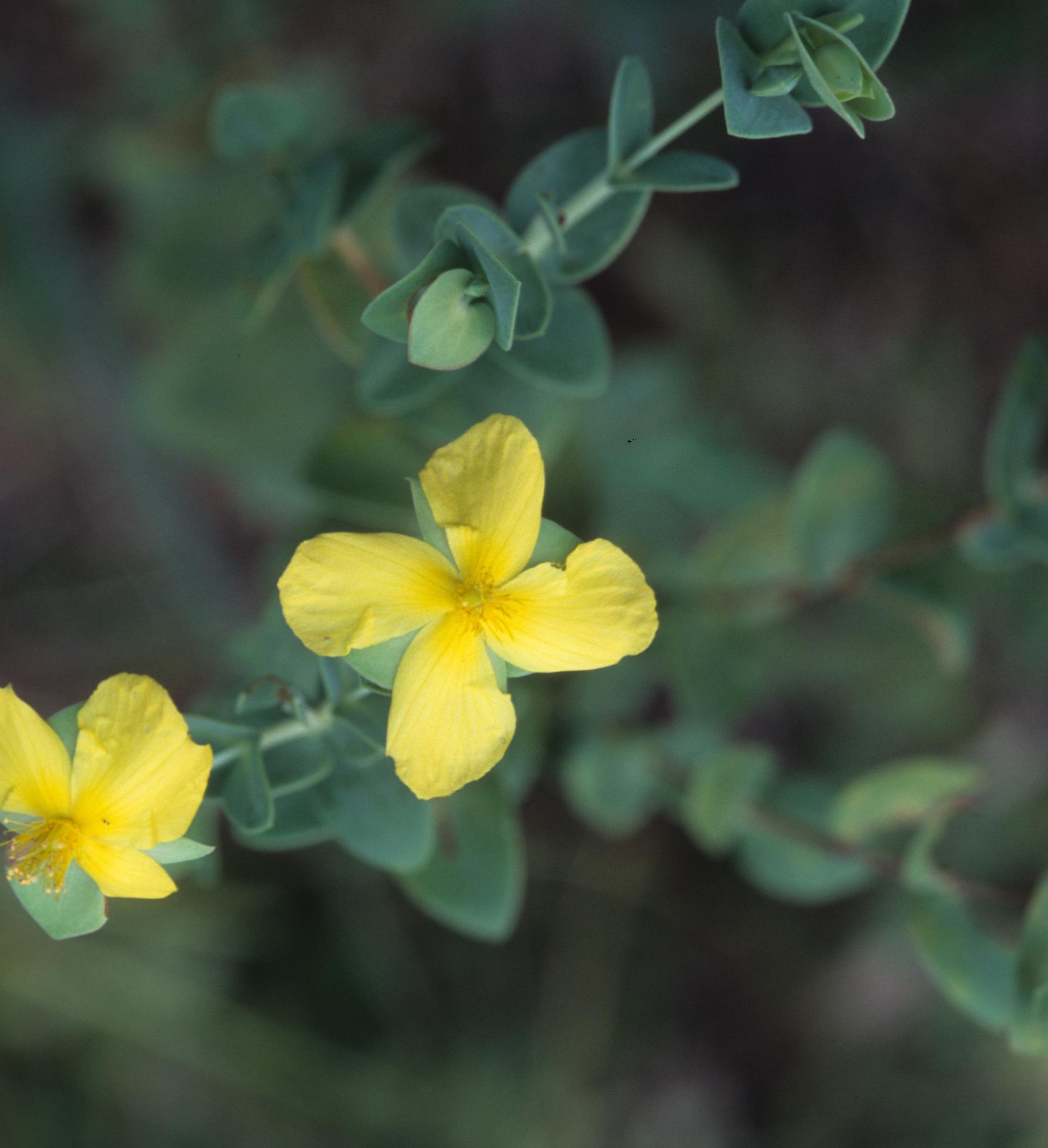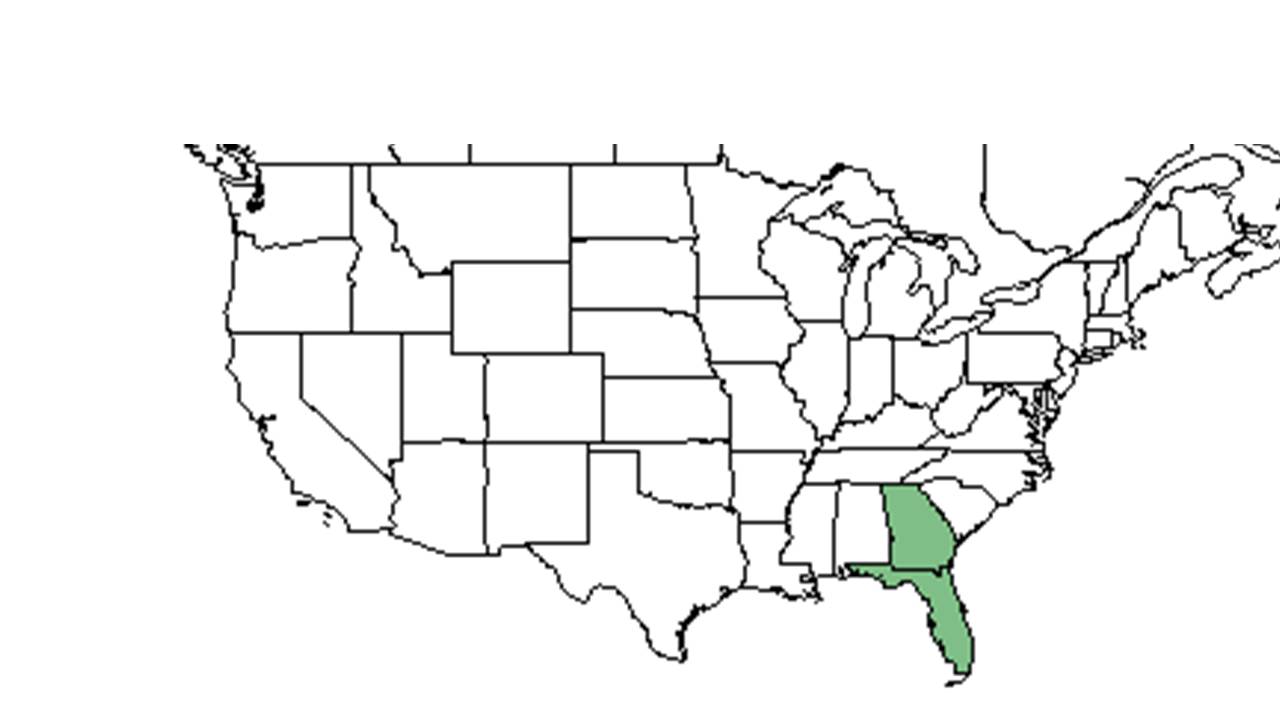Hypericum tetrapetalum
| Hypericum tetrapetalum | |
|---|---|

| |
| Photo taken by Gil Nelson | |
| Scientific classification | |
| Kingdom: | Plantae |
| Division: | Magnoliophyta - Flowering plants |
| Class: | Magnoliopsida – Dicotyledons |
| Order: | Theales |
| Family: | Clusiaceae ⁄ Guttiferae |
| Genus: | Hypericum |
| Species: | H. tetrapetalum |
| Binomial name | |
| Hypericum tetrapetalum (L.) Crantz | |

| |
| Natural range of Hypericum tetrapetalum from USDA NRCS Plants Database. | |
Common name: fourpetal St. John's-wort
Contents
Taxonomic notes
Synonyms: Ascyrum tetrapetalum (Lamarck) Vail[1]
Varieties: none[1]
Description
H. tetrapetalum is a slender plant, usually with few branchings.[2] As its name implies, this species has a tetramerous calyx and corolla.[2]
“Usually glabrous herbs or shrubs. Leaves usually punctate, simple, opposite, entire, usually sessile or subsessile, exstipulate. Inflorescence basically cymose; flowers perfect, regular, bracteates, subsessile or short-pedicellate, sepals 2, 4, or 5, persistent; petals 4 or 5, usually marcescent, yellow or pink; stamens 5-numerous, separate or connate basally forming 3-5 clusters or fascicles, filaments usually persistent; carpels 2-5, stigmas and styles separate or fused, ovary superior, 1-locular or partly or wholly 2-5 locular, placentation axile or parietal. Capsules basically ovoid, longitudinally dehiscent, styles usually persistent; seeds numerous, lustrous, areolate, cylindric, or oblong. In general, our species form a polymorphic complex with many intergrading taxa.”[3]
Distribution
This plant is found throughout eastern Georgia, south to southern Florida, and west to the Florida panhandle[1] with disjunct populations in western Cuba.[4]
Ecology
Habitat
H. tetrapetalum occurs in wet sandy soils, like those of wetland woodlands, mesic flatwoods, or the margins of Karst ponds.[2] It can also occur in disturbed areas like roadsides.[2] Associated species include Pinus palutris, Hypericum microsepalum, Serenoa repens, and gallberry.[2]
Hypericum tetrapetalum is an indicator species for the Central Florida Flatwoods/Prairies community type as described in Carr et al. (2010).[5]
Phenology
This species is recorded in the FSU Herbarium specimens as flowering in August, but in peninsular Florida, it can bloom throughout the year.[6] In north Florida, H. tetrapetalum has been observed flowering in July and December.[7]
Pollination
Hypericum tetrapetalum has been observed at the Archbold Biological Station to host leafcutting bees such as Megachile brevis pseudobrevis (Megachilidae family) and sweat bees from the Halictidae family such as Augochlorella aurata, Augochloropsis metallica, Lasioglossum coreopsis and L. miniatulus.[8] Deyrup observed these bees on, but not necessarily pollinating, H. tetrapetalum: Augochlorella aurata, Dialictzcs coreopsis, D. lniniatulusi.[9]
Conservation, cultivation, and restoration
Cultural use
Photo Gallery
References and notes
- ↑ 1.0 1.1 1.2 Weakley, A.S. 2020. Flora of the Southeastern United States. Edition of 20 October 2020. University of North Carolina at Chapel Hill, Chapel Hill, North Carolina.
- ↑ 2.0 2.1 2.2 2.3 2.4 Florida State University Robert K. Godfrey Herbarium database. URL: http://herbarium.bio.fsu.edu. Last accessed: June 2014. Collectors: R. A. Norris, Robert K. Godfrey, Steve L. Orzell, and Cecil R Slaughter. States and Counties: Florida: Alachua, Leon, Osceola, and Wakulla. Georgia: Camden and Clinch.
- ↑ Radford, Albert E., Harry E. Ahles, and C. Ritchie Bell. Manual of the Vascular Flora of the Carolinas. 1964, 1968. The University of North Carolina Press. 709. Print.
- ↑ Sorrie, B. A. and A. S. Weakley 2001. Coastal Plain valcular plant endemics: Phytogeographic patterns. Castanea 66: 50-82.
- ↑ Carr, S.C., K.M. Robertson, and R.K. Peet. 2010. A vegetation classification of fire-dependent pinelands of Florida. Castanea 75:153-189.
- ↑ Jason Sharp post to Florida Botany with image of flowering plant, 1 FEB 2016
- ↑ Nelson, G. PanFlora: Plant data for the eastern United States with emphasis on the Southeastern Coastal Plains, Florida, and the Florida Panhandle. www.gilnelson.com/PanFlora/ Accessed: 12 DEC 2016
- ↑ Deyrup, M.A. and N.D. 2015. Database of observations of Hymenoptera visitations to flowers of plants on Archbold Biological Station, Florida, USA.
- ↑ Deyrup, M. J. E., and Beth Norden (2002). "The diversity and floral hosts of bees at the Archbold Biological Station, Florida (Hymenoptera: Apoidea)." Insecta mundi 16(1-3).